Contents
s took up quail not so long ago, less than half a century ago. But the eggs of these birds have always been in demand by gourmets. The cost of quail meat and eggs is quite high, so raising quail for sale is a profitable business. People always prefer high quality products with dietary properties.
Marble quails also found their place in household plots and even in apartments. It is not difficult to keep birds, the main thing is to create a comfortable space for them. Marble quails are usually grown in cages (see photo), so a large area is not required.
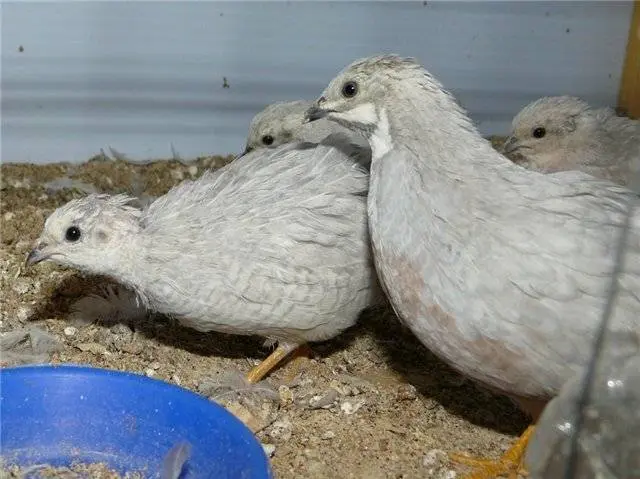
Caring for quails of this breed does not create any particular difficulties. You will learn about the basic rules from the article.
Description of appearance, characteristic
Quails of the Marble breed are not found in the natural environment. This is a product of scientists from the All- Institute of the Poultry Processing Industry. The Japanese quail was taken as a basis, with which certain work was carried out. The testes of Japanese males were irradiated with X-rays. As a result of the mutation, they got the Marble Quail. The following generations retain the qualities of the breed.
When describing a new species, they indicate an unusual light gray, with a bluish tint, plumage color. Even from afar, it can be seen that the feathers, intertwined with each other, create a pattern that is somewhat reminiscent of marble. Hence the name. The color of the quail is clearly visible in this photo.
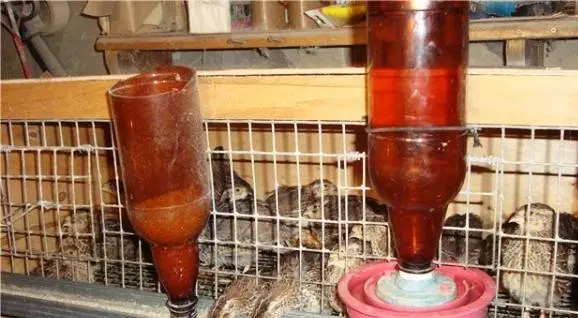
It is almost impossible to distinguish between male and female by color.
Characteristics of marble quails:
- An adult quail of the Marble breed weighs from 150 to 180 grams, females, oddly enough, are heavier – from 180 to 200 grams.
- Carcass length up to 18 cm.
- Marble quails are raised mainly for their eggs. The mass of one is up to 18 grams. Females rush almost every day, up to 320 pieces can be obtained per year. To get one kilogram of eggs from the Marble Quail, 2,6 kg of feed is enough. Since the price of one egg is high, the costs pay off with interest.
The benefits of quail eggs are well presented in the photo table.

Care instructions
Features of feeding
To get one kilogram of nutritious dietary meat, you will have to feed about 4 kilograms of feed. According to the established rules, Marble quails need to be fed at least 4 times a day.
Dry food is given separately from the wet mash in special feeders. In the presence of a large population of Marble quails, it is better to use automatic devices, in this case, feed losses are drastically reduced.
The same applies to drinkers. The fact is that Marble quail, like other relatives grown at home, should consume only clean water. The slightest pollution can cause intestinal diseases. And it is not always possible to change the water in an ordinary bowl on time. Suitable drinkers from plastic bottles, as in the photo.
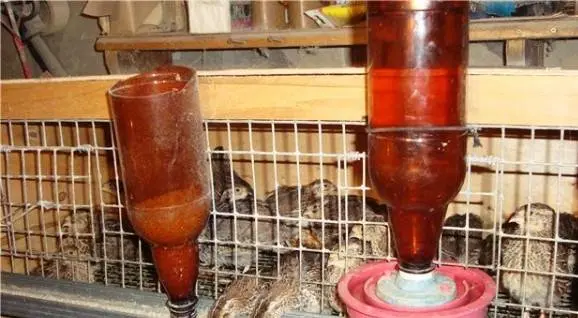
In summer, cages with quails can be put up on the street, in winter in a quail. The air temperature should not fall below +10 degrees. As for air humidity, the optimum is about 55%.
Quails are clean birds, they need to arrange a bath. For this, any container into which ash and sand are poured is suitable.
Video about the correct arrangement of the sparrowhawk:
What to feed adult birds
Quails of the Marble breed are given grain in crushed form:
- corn and wheat;
- millet and oats;
- rice, barley and pearl barley.
Quail growers feed their pets with lentils, soybeans, and peas. They are pre-steamed. No less valuable when growing Marble quails are hemp seeds, flax seeds, meal and sunflower cake.
As vitamin supplements, you need to feed various vegetables and herbs to quails, adding them to the mash. Beets and carrots are especially necessary for quails in winter.
If there are no special compound feeds, then bone, fish, and blood meal should be added to the diet of quails of the Marble breed, as well as its relatives. You can replace it with minced meat from fresh meat or fish. Products are boiled, crushed, introduced into the mixers.
Dairy products are considered easily digestible, it is best to give cottage cheese.
Breeding
Experienced breeders of Marble quails know that poultry are not able to hatch quails. Therefore, it is possible to breed livestock artificially, using an incubator. Today there is no problem with them. There are many modifications designed for a different number of eggs.
Marble quail eggs are small, so a lot is placed. In large farms, when a large number of young animals are required to replenish the livestock, powerful incubators are used. If the breeding of Marble quails is carried out for private needs, then it is better to breed quails in small incubators.
In private households, fixtures equipped with glass are often used. This is especially important for beginner poultry farmers, so as not to miss the moment when quails appear.
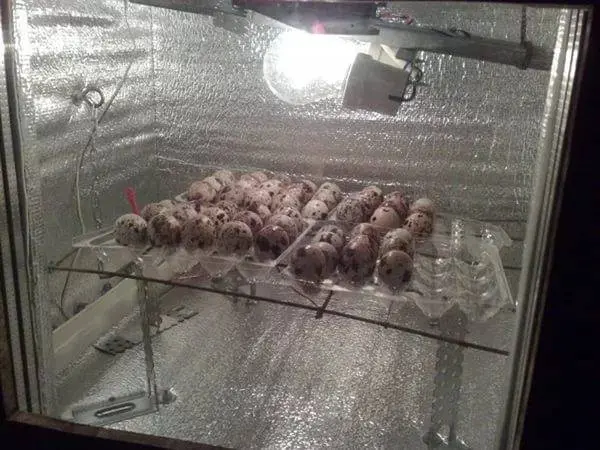
Rules for the care of quails
Marble quail chicks are born, as a rule, on the 17th-18th day. They are covered with a light fluff, there are no feathers yet. Marble quails weigh from 6 to 8 grams. From the first minute they begin to actively explore the space. Just admire the newborn quail in the photo!
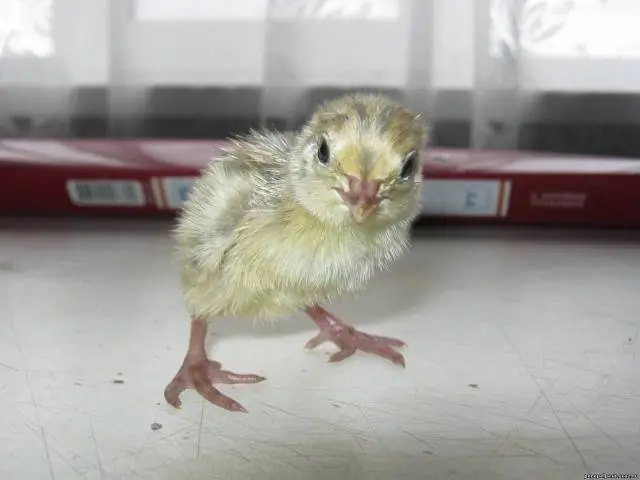
Where to deposit
After choosing the kids from the incubator, they need to be placed in a cardboard or plywood box. The size will depend on the number of quails. People who breed Marble quails on a large scale use special brooders. The bottom is covered with clean paper. It is changed as it gets dirty.
A grid is laid on top of the paper, the cell should be 5 by 10 ml. Thanks to her, the quail will not develop a specific “twine”.
The grown quails are transplanted into cages separately from adults.
Conditions of detention
Marble quail chicks, like all babies, need lighting. From the first days to three weeks, the light must be on 24 hours a day. Then from 3 to 6 weeks: an hour of light – an hour of darkness. Slightly matured chicks set the following mode: 3 hours of light – 1 hour without it. Later daylight hours are reduced to 12 hours.
This mode of lighting allows you to better digest food.
In addition, it is required to maintain a certain temperature. It is shown in the table.

Features of feeding
From the first minutes of life, Marble quails begin to actively look for food. You can use the same feed as for adult birds, but in smaller quantities.
Marble quails grow quickly, so the need for protein, vitamins, and minerals is great.
From the first day of life, chicks are fed:
- chopped boiled chicken eggs;
- cottage cheese, sprinkling it with breadcrumbs;
- greens.
Not bad is a special compound feed intended for growing hatched chicks of indoor birds, in particular, parrots. Clean water should always be available.
With proper care, little Marble Quails become like their parents in a couple of weeks. Body weight will increase 14 times.
We summarize
Marble quails are kept not only to obtain healing meat and eggs. Many people are attracted by the amazing color of birds. Since caring for them is not difficult, they are bred as decorative. Quails are not afraid of people, they are not afraid, and most importantly, they never scream. Their pleasant chirping pleases the ear.









